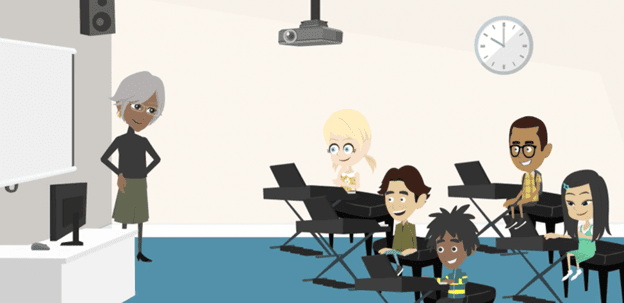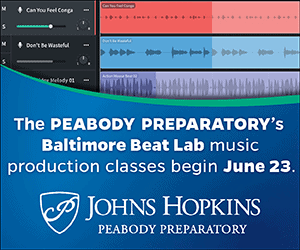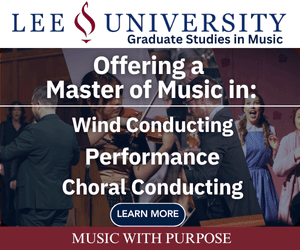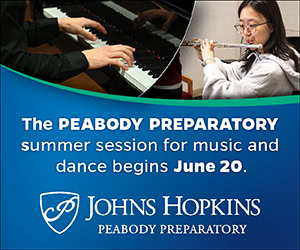/ News Posts / The “New” Model for Modern Music Education
The “New” Model for Modern Music Education
By Dan Mack
This blog is sponsored by NAfME Corporate member Lang Lang International Music Foundation®.
I once had the pleasure of giving a piano lesson to a woman who had not played in more than 30 years. She was understandably hesitant and approached the piano with caution, unsure of how it would feel to reconnect with the music of her youth. However, as she played, the music took over. The piano was an old friend, and they had finally reconnected. By the end of the lesson, she was crying and waving her arms with the thrill of rediscovering the music that had been within her. The seeds of joy, embedded into her heart from her youth, had been right there, waiting for her to let them bloom.
For hundreds of years, the piano has found itself as the very epicenter of music, inspiring people, cultures, and generations over and over again. Period. There is no other instrument, perhaps only rivaled by the human voice in singing, that is so globally accessed and used for so much in music.
That said, if you’re a music teacher, you likely have at least some basic facility on the piano, if indeed it is not your primary instrument. Why is that? It is because inside or outside of any formal music school or training, the piano is, and always will be, an instrument that stands alone, as well as acting as our most standard gateway of any musical idea or concept that we need to learn or communicate. It is rare to find a professional musician or music teacher who does not know what to do when standing in front of those 88 white and black keys.
Furthermore, anyone at all who has ever taken piano lessons at any point in their life has the lifelong ability to play the piano. It’s the “Once you learn how to ride a bike, you’ll never forget” theory. Only, for the current or former piano student, the rule is: “Once you learn how to play the piano, you’ll never forget.”
Shouldn’t everyone be given the opportunity to learn how to play? Imagine if every student in every public school was given the opportunity to learn to play the piano. Amazing right? Almost unbelievable. Until somewhat recently, this was the common problem faced by almost every school:
With the availability and affordability of keyboards, it’s becoming easier and easier for multiple keyboards to find their way into a single music classroom, and with the almost seamless integration with any tech device, such as phones, tablets, iPads, laptops, desktops, and more, the piano, as a medium of communication in music, is only going to grow.
It isn’t really surprising that an invention as amazing as the piano will only see more use as the tech age grows and develops.
Since 2008, the Keys of Inspiration® program in the Lang Lang International Music Foundation® has been working to “change the way music education is perceived in the public school system,” by donating state of the art Roland piano labs, curriculum, and professional development and training to Title I, and similarly underfunded, public schools worldwide. We believe that a piano lab can support and enhance any music curriculum or pedagogy, as well as any academic pursuit outside of music, all while providing students with the opportunity to learn to play the piano in and of itself.
For example, if your current curriculum uses Orff-Schulwerk, the arrangements can be played in a keyboard ensemble instead of xylophones and percussive instruments. If you are using Kodály, the kinesthetic, auditory, and visual elements can be easily reinforced with the use of keyboards. The study of music theory and appreciation, or brass, woodwinds, strings, percussion, or choral / vocal can all be centered around obtaining a basic proficiency on the piano. And if you ask any teacher, we think they would agree that if you can learn how to play the piano, you can learn almost anything.
If your music program only has one keyboard or piano, don’t fret! It’s a great place to start, even just one student at a time, because the piano now finds itself as the re-emerging center in a new model for the challenges faced by teachers and students in modern education. For many of us music educators, using the piano as a teaching tool is not a new concept. However, when you consider everything that the piano can address in the scope of 21st century learning, there is no question that the piano can provide all of the following solutions and so much more.
- Linguistic & cultural barriers—Music is a universal language, and any student from any country of origin, speaking any language, can learn to play the piano just by listening and watching. If they learn some basic terms in English, or if their teacher learns how to say some of the following simple items in the student’s native language, the learning connections will come quickly!
- Count from one to five for fingering
- Left vs. right
- A through G in the alphabet
- Basic theoretical or emotional terminology such as slower, faster, louder, softer, happy, and whatever suits the individual learning needs best!
- STEAM—When integrated with technology, the study of the piano checks so many boxes in a STEAM-based curriculum. Integration with a digital audio workstation for example, creates connections to technology, engineering, arts, and math.
- Neurodiversity—Every young learner is so unique, and their differences and strengths in perceiving and responding to the world should be encouraged and embraced. With the combination of its auditory, kinesthetic, and physical (fine motor skill) elements, a study of the piano can address so many elements of the neurodiversity spectrum.
- College, career, and life skills—The study of the piano and the arts is an amazing asset to include on any college or employment application. The skills involved, including the required discipline, the tech integration, working within an ensemble or group, all provide for so many directly transferable college and career-ready skills. Also, creating music as a child provides a core foundation for developing lifelong learning skills. Even if the young student decides to stop playing the piano, the trajectory for lifelong cognitive growth is established.
- Supporting low socioeconomic status—It is a misconception that there is a high barrier to entry in the study of the piano, and we here at the Lang Lang Foundation know it’s within reach for everyone. By providing access to high quality music education experiences centered around the study of the piano in public schools and other community programs, otherwise underserved student populations have demonstrated appreciation, shown genuine gratitude, and have created excitement and enthusiasm that resonates throughout an entire school community.
- Listening & communication—Good listening skills is one of the most cherished academic abilities for young learners, and an often overlooked element in the study of the piano. For example, if a student decides to learn “by ear” through listening to an example of a musical piece or passage, in addition to, or in place of reading music, they are directly transferring what they hear into their playing. There is no mistaking the accuracy of their learning; either they can play the passage correctly, or not, and if they can’t, they simply practice until they can. Conversely, if a student elects to read a musical passage without hearing it, they still have to listen to themselves when playing to determine if they are correct. This also creates a direct and dual “input and output” element to listening. Not to mention, when reading music, you are hearing the music in your mind. It would be difficult to refute that this is some sort of cognitive “superpower.”
As far as communication, music really is the closest thing to being a universal language. While music could never be as specific as language, it can communicate emotions and ideas in ways words never could.
- Creativity—The very root of creativity is found within the word itself: to create. When a student is learning to play the piano, they are learning how to create music. When someone learns how to play the piano and create music, they realize that they, just like anyone, have an innate ability to create, and be creative. The proof in this is the fact that a piano, without someone creating music with it, quickly turns into a table.
- Social emotional learning (SEL)—Nothing can center a student’s attention, emotions, and physical self quite like playing the piano. It is one of the very few academic endeavors that involves a high level of concentration, use of fine motor skills, and regulates the emotional and spiritual facets of a student. While listening to music can certainly support SEL practices, playing the piano and creating the music itself is an entirely enhanced level of experience and appreciation for the student, and provides a way to create, regulate, and control emotion, really out of thin air. SEL helps a student to find and share their voice.
Again, our discussion here advocating for the piano as the “new” model in music education is really not new at all; however, making it accessible as a 1:1 tool for 400+ students in a single school, addressing any and all of the challenges facing those students, has amazing potential. With approximately 200 Keys of Inspiration® programs in the United States, Europe, and China, we have endless stories and firsthand accounts of everything we have discussed here. We hope for nothing but the same results and experiences for you and your students, as you grow in the use of the piano as the center of everything you do!
Who knows? Perhaps thirty years from now, your students will remember the impact the piano had on their childhood and hopefully, they will continue to reach for those keys time and time again.
About the author:
 Dan Mack is the Education Associate for the Keys of Inspiration® program in the Lang Lang International Music Foundation®, and a Boston Public School teacher. A graduate of Berklee College of Music and Boston University, Dan’s music performance and education experience has taken him across the United States in both public and private schools, from early childhood through undergraduate instruction.
Dan Mack is the Education Associate for the Keys of Inspiration® program in the Lang Lang International Music Foundation®, and a Boston Public School teacher. A graduate of Berklee College of Music and Boston University, Dan’s music performance and education experience has taken him across the United States in both public and private schools, from early childhood through undergraduate instruction.
A KOI Piano Lab is what he would describe as his ideal music classroom: “People sometimes ask me what my ideal music classroom would look like, and with a KOI Piano Lab, I’m able to say ‘We’re standing in it.’”
Did this blog spur new ideas for your music program? Share them on Amplify! Interested in reprinting this article? Please review the reprint guidelines.
The National Association for Music Education (NAfME) provides a number of forums for the sharing of information and opinion, including blogs and postings on our website, articles and columns in our magazines and journals, and postings to our Amplify member portal. Unless specifically noted, the views expressed in these media do not necessarily represent the policy or views of the Association, its officers, or its employees.
Published Date
March 19, 2024
Category
- Ensembles
- Innovation
- Program Development
- Social Economic Status
- Social Emotional Learning
- Technology
Copyright
March 19, 2024. © National Association for Music Education (NAfME.org)











